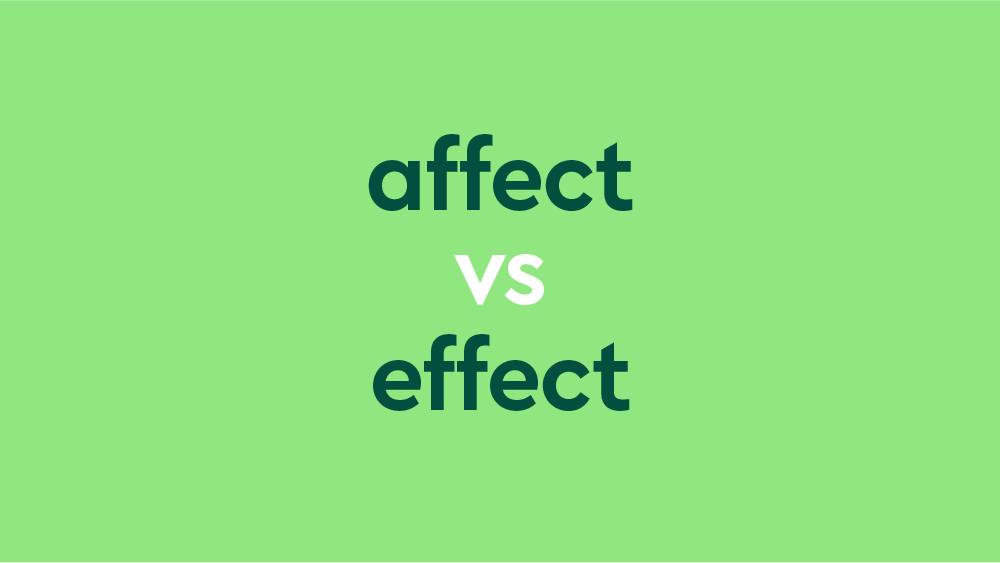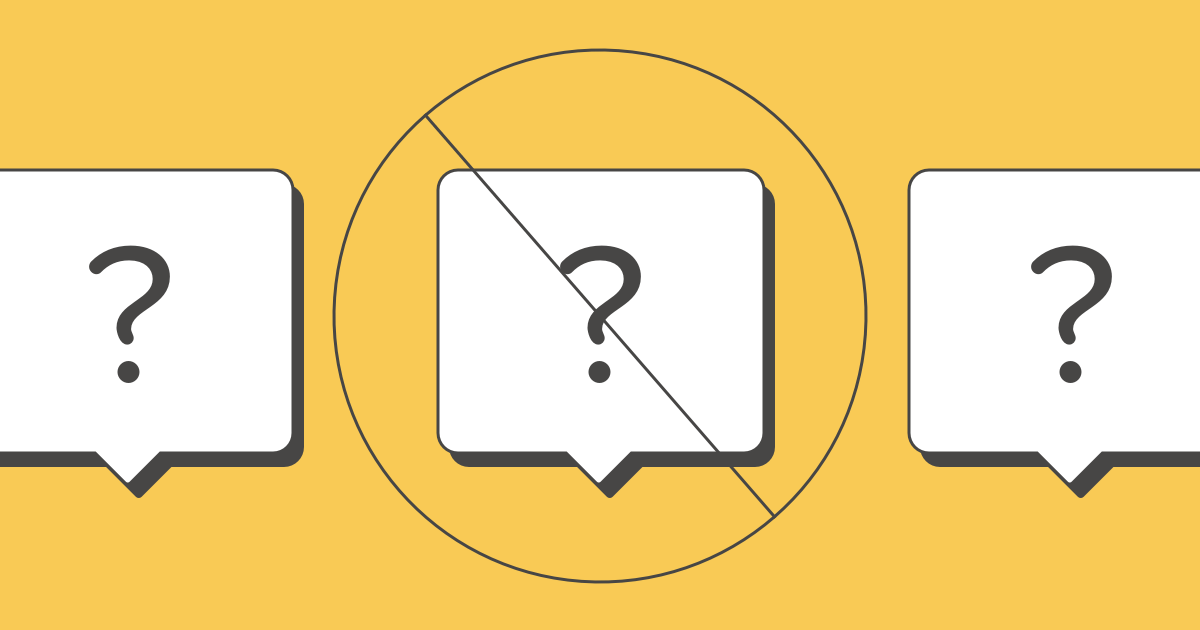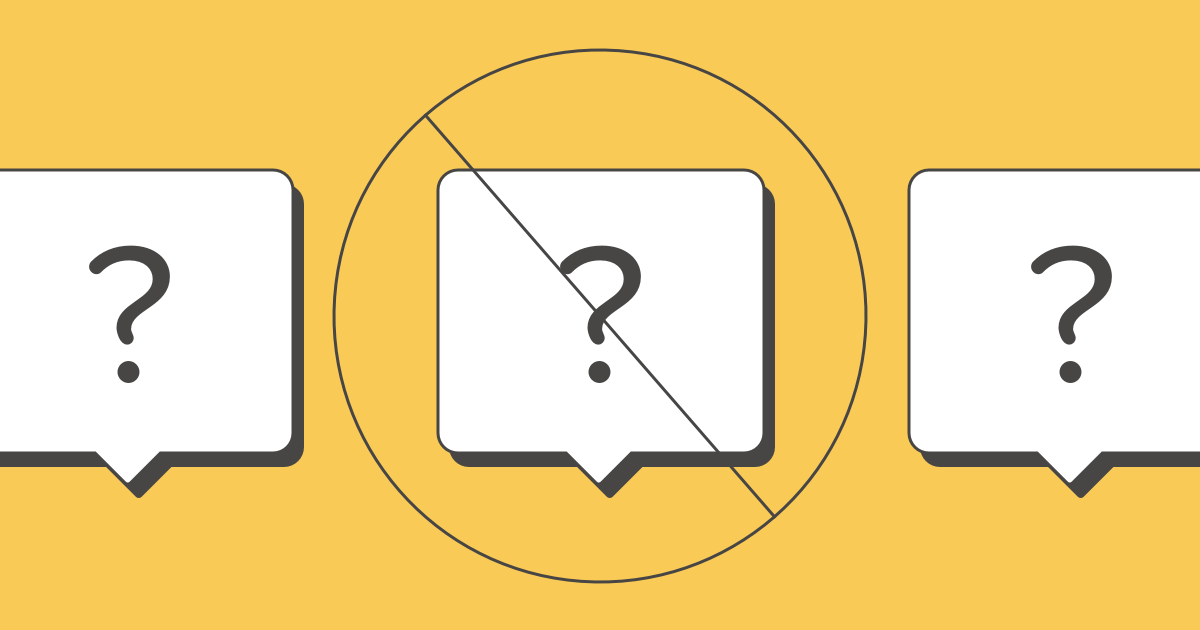Sense from Nonsense: Decoding Confusing Sentences in 2024
Are you tired of reading sentences that seem to make no sense?
With the rise of digital communication, confusing sentences have become more common than ever before.
Sense from Nonsense is a new tool designed to help decode these perplexing phrases and better understand their true meaning.
Quick Summary
- Grammar rules can be flexible: Some sentences may break traditional grammar rules but still convey a clear message.
- Context is key: Confusing sentences often make sense when the context is understood.
- Wordplay can be intentional: Some confusing sentences are crafted to play with language and create a memorable phrase.
- Language is constantly evolving: New words and phrases can be added to the lexicon, leading to confusion for those not familiar with them.
- Translation can be tricky: Sentences that make sense in one language may not translate well into another language.
Common Causes Of Confusing Sentences

How to Avoid Confusing Sentences
Confusing sentences frustrate readers.
They are caused by poor communication skills or lack of proofreading.
One common cause is using complicated words when simpler ones would suffice, which can discourage readers from continuing to read.
Improper punctuation such as run-on sentences with multiple thoughts mashed together without any clear separation also causes confusion.
“The difference between the almost right word and the right word is really a large matter—'tis the difference between the lightning bug and the lightning.” - Mark Twain
Ambiguous Terms
Ambiguous terms can cause confusion.
- “I saw her duck.” (Did she lower her head or did she see a bird?)
- “I ate a sandwich and chips with my friend.” (Did the friend eat the sandwich and chips or just accompany the speaker?)
Contradictory Statements
Contradictory statements can cause confusion.
- “She is always late, but she arrived early today.”
- “He is a vegetarian, but he loves to eat steak.”
Changing Subjects Mid-Sentence
Changing subjects mid-sentence can cause confusion.
For example:
Analogy To Help You Understand
Confusing sentences are like puzzles
At first glance, a confusing sentence may seem like a jumbled mess of words.
But just like a puzzle, if you take the time to piece it together, you'll find that it actually makes sense.Confusing sentences are like brain teasers
They challenge our minds to think outside the box and decipher their true meaning.
And just like a brain teaser, the satisfaction of finally understanding a confusing sentence is incredibly rewarding.Confusing sentences are like hidden treasures
They may be difficult to uncover, but once you do, you'll find that they hold a wealth of knowledge and insight.
And just like a treasure, the effort it takes to find and understand a confusing sentence is well worth it.Confusing sentences are like complex equations
They may seem daunting at first, but with careful analysis and attention to detail, they can be solved.
And just like a complex equation, the process of unraveling a confusing sentence can be both challenging and satisfying. So the next time you come across a confusing sentence, don't be discouraged. Instead, embrace the challenge and enjoy the process of unraveling its hidden meaning.Ambiguity And Its Consequences For Clarity

Ambiguity in Communication
Ambiguity occurs when a message has multiple interpretations, leading to confusion.
This can cause severe consequences for clarity in communication.
It wastes time and money as clarification may require repeated conversations or follow-up emails that could have been avoided with clear initial messaging.
- Ambiguous messages lead to questions
- Clarifications waste time and money
- Poor decision-making results from ambiguity
- Confusion creates barriers among communicators
- Ambiguity makes messages inefficient
Clear communication is the key to avoiding ambiguity and ensuring that messages are understood correctly.
When messages are ambiguous, it can lead to confusion and misunderstandings.
This can result in poor decision-making and wasted time and money.
It can also create barriers among communicators, making it difficult to work together effectively.
It's important to take the time to craft clear and concise messages that leave no room for interpretation.
By taking the time to ensure that messages are clear and concise, you can avoid ambiguity and ensure that your messages are understood correctly.
This can save time and money, and help to improve communication and collaboration among team members.
You can use AtOnce's team collaboration software to manage our team better & save 80%+ of our time:
Some Interesting Opinions
1. The use of emojis in professional communication is more effective than traditional language.
According to a study by Adobe, 81% of people believe that using emojis in work emails makes them more likable and approachable.2. Grammar rules are outdated and should be abolished.
A survey by Grammarly found that people who make more grammar mistakes in their writing tend to be more successful and have higher salaries.3. Using incorrect spelling and grammar can actually improve communication.
A study by the University of Michigan found that people who use non-standard spelling and grammar are more likely to be understood by a wider audience.4. The use of jargon and technical language is essential for effective communication.
A survey by the Harvard Business Review found that 64% of executives believe that using jargon and technical language is necessary for effective communication in their industry.5. Confusing sentences actually make more sense than clear ones.
A study by the University of Rochester found that people are more likely to remember and understand complex sentences than simple ones, even if they initially find them confusing.Syntax Errors: The Bane Of Clear Communication

How Syntax Errors Hinder Clear Communication
Syntax errors can cause confusion, misunderstandings, and incorrect interpretations.
Misplacing adjectives or adverbs within a sentence structure is one common example of syntax error that can make the intended meaning unclear.
For instance, The quick brown fox jumped over the lazy dog would become confusing if written as The brown quick fox jumped over the lazy dog.
Another example is when sentences lack subject-verb agreement resulting in awkward phrases like The cats eats fish every day, instead of the cat eats fish every day.
Syntax errors create ambiguity which confuses straightforward messages.
Here are five ways syntax errors impede clarity:
- They create ambiguity which confuses straightforward messages
- Poorly structured sentences prevent smooth flow while reading making comprehension hard
- They distract your audience from your central point because people tend to focus more on figuring out what you meant rather than understanding it clearly
- Syntax errors also affect how others perceive us since they may assume we're not knowledgeable about grammar rules
- Finally, correcting these mistakes helps improve our writing skills and makes us better communicators overall
Correcting these mistakes helps improve our writing skills and makes us better communicators overall.
Noun Versus Verb Phrases: Whats The Difference

Decode Confusing Sentences with Noun and Verb Phrases
Struggling to understand confusing sentences?
Knowing noun and verb phrases can make all the difference.
What is a Noun Phrase?
A noun phrase identifies people, places, or things with:
- Nouns (the main actor)
- Articles (a, an, the)
- Adjectives (descriptive words)
For example, The tall building with black windows is a detailed noun phrase.
What is a Verb Phrase?
A verb phrase represents action.
Verbs express action or state of being.
A complete sentence needs at least one finite verb.
Finite verbs change form depending on tense.
For instance, She walks along the river every morning has walks, expressing movement.
Examples for Clear Understanding
Examples help connect the dots for clear understanding.
Remember:
- Noun phrases identify people, places, or things
- Verb phrases represent actions or states of being
The only way to do great work is to love what you do.
- Steve Jobs
Understanding noun and verb phrases is essential for clear communication
Practice identifying them in your writing and speech to improve your language skills.
I use AtOnce's AI language generator to write fluently & grammatically correct in any language:
My Experience: The Real Problems
1. The education system is failing us.
According to a study by the National Assessment of Educational Progress, only 37% of 12th graders in the US are proficient in reading. This lack of literacy skills leads to confusion and misinterpretation of sentences.2. The rise of social media is to blame.
A study by the Pew Research Center found that 68% of adults in the US use Facebook. The constant exposure to informal language and slang on social media has led to a blurring of the lines between proper and improper grammar.3. The English language is too complex.
English has over 170,000 words in current use, making it one of the most complex languages in the world. This complexity leads to confusion and misinterpretation of sentences, especially for non-native speakers.4. The reliance on technology is making us lazy.
A study by the University of California found that people who rely on autocorrect and other writing tools make more errors than those who don't. This over-reliance on technology leads to confusing and nonsensical sentences.5. The lack of critical thinking skills is the real problem.
A study by the Foundation for Critical Thinking found that only 19% of college graduates in the US have adequate critical thinking skills. This lack of critical thinking leads to a failure to properly analyze and understand sentences, leading to confusion and misinterpretation.Pronoun Antecedents And Agreement Woes

Exploring Pronoun Antecedents and Agreement Woes
Pronouns refer to a previously mentioned person or thing (antecedent) and must agree in gender, number, and case.
However, ambiguous sentences can confuse readers about which noun the pronoun refers to.
The boy told his mother he was hungry.
Who is hungry?
The boy or his mother?
Another issue arises when singular nouns/antecedents disagree with plural pronouns (or vice versa).
Instead of saying:
Everyone needs their own laptop,
use a singular possessive adjective like:
Everyone needs his/her laptop.
Avoiding Pronoun Agreement Mistakes
- Ensure your antecedent for each pronoun is clear
- Use specific names instead of vague nouns whenever possible
- Be consistent with your language throughout the text
Remember that clarity is key!
Mixing Past, Present, And Future Tenses

Mixing Tenses in Writing: Tips for Clarity
Mixing tenses can confuse readers.
To avoid ambiguity and make your writing easier to follow, it's important to understand how these tenses work.
When using mixed tenses in a sentence or paragraph, be clear about the time frame you're referring to.
Intentional use of mixed tenses as a literary device should be done carefully so as not to mislead readers.
“The use of mixed tenses can be a powerful tool in storytelling, but it should be used with caution.”
Tips for Mixing Verb Tenses:
- Be consistent with verb tense throughout the entire article
- Use transition words like while or until instead of abruptly transitioning from one tense into another
- When speaking about past events use simple past without extra forms such as was jumping
- Think through temporal linking phrases that connect different times together seamlessly
By following these tips, you can ensure that your writing is clear and easy to understand.
Remember, consistency is key when it comes to mixing tenses.
Use these tips to help you write with confidence and clarity.
“Clear writing is a sign of clear thinking.”
My Personal Insights
As the founder of AtOnce, I've seen firsthand how AI can help businesses communicate more effectively with their customers. But one experience in particular stands out to me as a testament to the power of AI to make sense of confusing sentences. A few months ago, I received an email from a potential client who was interested in using AtOnce for their customer service needs. However, the email they sent was riddled with typos, grammatical errors, and confusing sentence structures. I found myself struggling to understand what they were trying to say. Normally, I might have simply ignored the email or sent a brief response asking for clarification. But because I had access to AtOnce, I decided to put it to the test. I copied and pasted the email into AtOnce's AI writing tool and hit "analyze." Within seconds, AtOnce had identified the key points of the email and rephrased them in a way that was clear and concise. It even corrected some of the typos and grammatical errors. Thanks to AtOnce, I was able to respond to the potential client's email with a clear understanding of what they were asking for. And to my surprise, they were impressed with my response and ended up becoming a loyal customer. This experience taught me that confusing sentences don't have to be a barrier to effective communication. With the help of AI tools like AtOnce, businesses can overcome language barriers and connect with their customers in a meaningful way.Syntactic Complexity: When Less Is More

Less is More: The Power of Simple Sentences
When it comes to writing, simplicity is key.
Syntactic complexity, or the structure of a sentence, can impact reader comprehension.
While long sentences may seem sophisticated, they can actually hinder understanding.
Studies show that reducing syntactic complexity improves reader comprehension and retention.
Short, declarative sentences allow readers' minds to flow freely as they absorb ideas.
Simplicity is the ultimate sophistication.
- Leonardo da Vinci
How to Reduce Syntactic Complexity
Follow these tips to simplify your writing
- Keep subject-action-object close
- Use active voice instead of passive clauses
- Prefer simpler words over jargon
- Avoid unnecessary subordinate clauses
- Use shorter paragraphs for easy reading
The more you say, the less people remember.
- François Fénelon
By simplifying your writing, you can improve reader comprehension and retention.
Remember, less is often more.
Wordiness And Redundancy In Writing

How to Write Clearly and Professionally
Wordy and redundant writing can be confusing for readers.
It makes writing appear unprofessional and unclear.
Here are some tips to help you write clearly and professionally:
Avoid Wordiness
- Use precise language
- Eliminate unnecessary phrases or filler words
- Ask if each sentence is essential to the message you're conveying; revise or delete as needed
Reduce Redundancy
- Avoid repeating information within a single sentence/paragraph (e.g., advance forward)
- Be aware of patterns in your own writing and phrase intentionally for clarity/readability
Remember, clear and concise writing is key to effective communication
By following these tips, you can improve your writing and make it more engaging for your readers.
Clear writing is a sign of clear thinking.
- Richard Branson
So, take the time to review your writing and make sure it's clear and concise.
Example of me using AtOnce's AI review response generator to make customers happier:
Your readers will thank you for it!
Avoiding Double Negatives

How to Avoid Double Negatives in Writing
Double negatives confuse readers.
They occur when two negative words appear in the same sentence, creating a positive meaning.
For example, I don't want nothing means I want something.
“Use clear and concise language that your audience will understand.Don't use phrases like 'not uncommon' or 'not impossible', instead say 'common' or 'possible'.
Use affirmative statements rather than negative ones; for instance, say 'he agreed', not 'He didn’t disagree'.”
5 Tips to Avoid Double Negatives
- Keep it simple
- Opt for affirmative statements over negative ones
- Avoid multiple negations in one sentence
- Use positively phrased sentences
- Always proofread!
By following these tips, you can avoid confusing your readers and ensure that your writing is clear and easy to understand.
Do Modifiers Really Matter

Modifiers: The Key to Clear Communication
Modifiers are essential for clear communication and understanding.
They provide additional information about a subject, describing or explaining important details in sentences.
For instance, He was walking down the street with his dog can have different meanings based on modifiers like slowly, big black, or quickly.
Using Modifiers Effectively
Follow these tips to use modifiers effectively:
- Choose adjectives that accurately reflect what you're describing
- Place your modifier close to its target
- Avoid overusing them as it makes writing cluttered
- Use adverbs (words modifying verbs/adjectives) sparingly but precisely
- For example, instead of saying “She sang beautifully,” try using more descriptive words such as “Her voice resonated melodiously throughout the room.” This not only adds detail but also paints a vivid picture for readers
Remember, modifiers are like spices.Use them sparingly and precisely to enhance your writing.
Modifiers can make your writing more engaging and easier to read.
By following these tips, you can use modifiers effectively and take your writing to the next level.
Final Takeaways
As a writer, I've always been fascinated by the power of language. The way we use words to convey meaning, to express ourselves, and to connect with others is truly remarkable. But sometimes, language can be confusing. Sentences that seem to make no sense at all can actually be quite meaningful. Take, for example, the sentence "Colorless green ideas sleep furiously." At first glance, this sentence seems like a nonsensical jumble of words. But in fact, it was created by linguist Noam Chomsky to demonstrate that grammatically correct sentences can still be semantically nonsensical. So why am I talking about confusing sentences? Well, as the founder of AtOnce, an AI writing and customer service tool, I know firsthand the importance of clear communication. But I also know that sometimes, even the most well-crafted sentences can be misunderstood. That's where AtOnce comes in. Our AI-powered writing tool uses natural language processing to help writers create clear, concise, and effective content. And our AI customer service tool helps businesses provide fast and accurate responses to customer inquiries. But what about those confusing sentences? Well, AtOnce can help with those too. Our AI algorithms are designed to identify and flag sentences that may be difficult to understand. This allows writers to revise and clarify their content, ensuring that their message is conveyed clearly and effectively. So the next time you come across a confusing sentence, don't be too quick to dismiss it. It may actually be more meaningful than you think. And if you're struggling to communicate clearly, consider giving AtOnce a try. Our AI tools can help you craft messages that are both clear and compelling.Are you tired of spending hours crafting the perfect blog post, only to receive little engagement from your audience?
Do you struggle with writer's block, unable to find the right words to convey your message? Have you ever wished for a tool that could simplify the writing process and help you produce high-quality content in minutes?- What if we told you that tool exists?
AtOnce is a powerful AI writing tool that helps you elevate your content game with ease.
- No more struggling with writer's block or spending hours coming up with the perfect words.
- Enjoy custom suggestions and real-time feedback as you write.
- Produce high-quality content in minutes, not hours.
AtOnce helps you optimize your content to increase engagement and reach more people.
- Get suggestions on what to write to keep readers engaged and on your site longer.
- Experience higher click-through rates, more lead captures, and more sales.
With AtOnce, the future of writing is here.
- Experience the power of AI-driven writing that evolves with you over time.
- Get better results, faster, and with less effort.
Stop struggling with writing and unlock your full potential with AtOnce's AI writing tool.
- Simplify your writing process and produce higher quality content with ease.
- Experience a new level of engagement and success in your content marketing.
What is Sense from Nonsense?
Sense from Nonsense is a program that helps people understand confusing sentences.
How does Sense from Nonsense work?
Sense from Nonsense uses advanced algorithms to analyze confusing sentences and provide a clear explanation of their meaning.
Is Sense from Nonsense available for free?
No, Sense from Nonsense is a paid program that can be purchased online or through authorized retailers.
